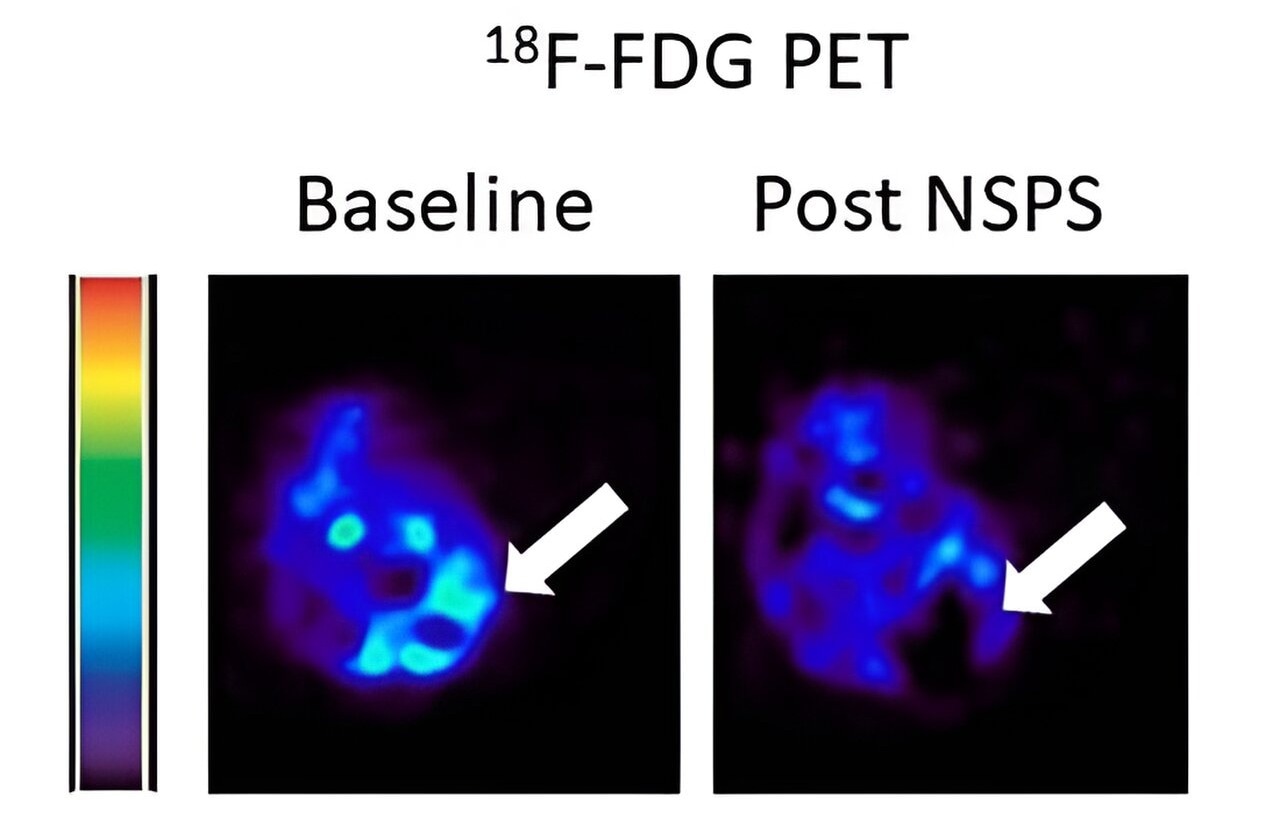Disrupting the acidic “microenvironment” of a tumor without causing injury to normal tissue is a novel method of tumor elimination discovered by a diverse research team at Vanderbilt University and Vanderbilt University Medical Center.
 From left, images of a mouse model of breast cancer before and after NSPS administration. Image Credit: Cancer Medicine (2024). DOI: 10.1002/cam4.6812
From left, images of a mouse model of breast cancer before and after NSPS administration. Image Credit: Cancer Medicine (2024). DOI: 10.1002/cam4.6812
This unconventional method targets hydroxyapatite (HAP), a naturally occurring mineral that is formed by some tumors and is a key component of bone and teeth.
HAP crystals can promote the growth, migration, and metastasis of tumor cells in the extracellular milieu that envelops and supports them. On the other hand, HAP is not present in healthy soft tissue, which makes it a desirable target for cancer detection and therapy.
The researchers used a variety of molecular analytical techniques to identify and create a nanoparticle that, when injected into tumor-associated HAP crystals via an injectable solution known as NSPS, chelated or bound to calcium on the crystals, causing them to disintegrate.
Dissolution caused a rapid shift in the tumor microenvironment’s acidity called localized alkalosis, which was potent enough to kill breast cancer cells cultured in it and inhibit tumor development in animal models of human breast, colon, lung, and prostate cancers.
At the same time, NSPS showed little contact with normal soft tissue and bone, according to a study published in the journal Cancer Medicine. These data indicate that NSPS could constitute “a one-of-a-kind and first in a class of novel cancer therapeutics.”
Mohammed Tantawy, Ph.D., MBA, the corresponding author of the study, is a member of the Vanderbilt University Institute of Imaging Science at VUMC and a research associate professor of Radiology & Radiological Sciences.
Compared to the surrounding normal tissue, the microenvironment of tumors is typically more acidic. Acidity may have a role in tumors like triple-negative breast cancer, which have a low overall survival rate and a high risk of recurrence, displaying treatment resistance by changing the structure or absorption of cancer medications.
The researcher added, “There is an urgent clinical need for new treatment paradigms that could improve the outcome for cancer patients with poor prognosis.”
While further research on human beings is essential, the researchers noted “NSPS has significant potential to be a paradigm-changing approach to the treatment of cancer patients with poor prognosis.”
Tantawy added, “Within the Institute of Imaging Science, we are fortunate to be able to take projects like this from initial conception through the development of novel ligands for detection and treatment of cancer into in vivo demonstrations based on multimodal imaging and even into human subjects.”
Journal Reference:
Tantawy, M. N., et. al. (2024) Tumor therapy by targeting extracellular hydroxyapatite using novel drugs: A paradigm shift. Cancer Medicine. doi:10.1002/cam4.6812.